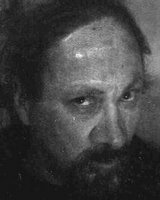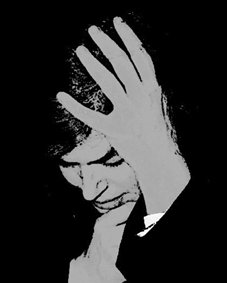I have little interest in commercial art. I am not the least
impressed by sales. Some of the world's most idiotic artists make
the most money. You do not have to look very far to find an
example. The one that comes to mind right off is the man Robert
Kincaid. He has advertized widely in many magazines. You may
remember having seen his ads. "Cute" little houses with the
lights on inside making a glow, for instance, on the snow
surrounding the villages and homes.
There are of course ways of critiqueing a work of art on a
technical level but one rarely sees that sort of thing in
professional reviews. Learning the technical side of art is done
at the student level. Once in a long while a reviewer will
comment on the lack of good technique because, perhaps, the
paint is flaking off which indicates the painter was sloppy about
preparation, or did not know how to prepare his canvas or
whatever. Comments on that sort of thing are very rare. I mean
comments in reviews in newspapers or professional journals.
It is almost impossible for me to reply to comments from people
whose ideas about art are very primitive. I am a person with
almost no education in the sciences and might well make foolish
comments or ask naive questions about matters of science. It is
not a matter of being able to judge on "technichal criteria."
Again I mention it is most unlikely that a professional reviewer
will get into technical areas when commenting on a work of art.
One is free, of course, to choose what one wishes. But you will
never have a good hold on what makes a good work of art unless or
until you spend some time studying the field. Your ideas of how
professionals in the arts see works of art would be so far and
away from the truth that I would have no answer for your
comments. Artists, of all ilk, spend years of hard work learning
their craft. I cannot begin to impart in a short article with
just a few words what it took me years of hard work to absorb.
One thing is clear however. You cannot even begin to understand
what art is about if your approach is based on what you have
learned in order to become a scientist, engineer, or a computer
professional. What is rightfully valued in computer training
might well be devalued when it comes to training and education in
the arts. It would be most difficult, I assume, for one to
realize the extent to which intuition is used by artists;
spiritual things are dealt with, secrets, suspicians, conflicts,
the unkown. The unknown can flag us on to further experimentation
with sometimes glimpses of enormous beauty and even comfort and
sometimes glimpses of Hell. We deal and work with the nebulous.
We present our very awe and gigantic puzzlement.
You are free, naturally, to like what you like. You will choose
according to your ability to experience what is in front of you.
You might keep in mind that that ability can be one that has had
little chance to develop or it can be an ability that is honed to
appreciate works of art in great depth.
It is like trying to understand philosophy when the teacher is
speaking in a language totally foreign to the listener. Within
language are cultural refrences, references that the native
speakers find obvious, so obvious that they do not hesitate for a
moment while they, and their audience, absorb the extra meaning
that is being injected. The spontaneous injection of ideas might
be as slight a thing as the use of a single word, or a phrase. It
might colour the ideas being presented rather like a wash of
colour spread over part of a painting.
I feel I must tell you that I have found the people in science I
have met, and even become friends with, have made my life far
richer than it was before. There is ample room for all of us. And
in the end we all seek the same truth. We just go about it in
different ways. We find different facets too.
The descriptions "important art" and "good art" are in general
not in my vocabulary. I become bored with conversations dealing
with these terms.
I am not used to writing or speaking about art with people who
have little knowledge about art and do not intend to learn more
about it. Personally I am on a continuous search, have been all
my life, and I have not yet found all the answers. In fact, in
spite of my industry, I suspect I have been able to uncover only
a small fraction of the ideas concerning art waiting out there
for reaping.
I have often worked with people who have no background to speak
of in the arts but in almost all cases those people were curious,
wanted to learn, were willing to spend time with the work of
world renouned geniuses, with the work of scholars in the field.
It has been one of the great delights of my life to not only work
with children but with people who teach children. Children
frequently have less inhibitions and it is an adventure working
with them. One never knows what will appear, what questions will
be asked, problems solved.
Often the creative art work of so-called primitive peoples is
highly sophisticated. Remember the work from Africa, from the
Haida Indians of British Columbia, just for starters. Think of
the masks or the totam poles. There are thousands and thousands
more. It seems to me that the notion of aesthetics is evident in
societies long before those societies put their minds to
sophisticated and complex scientific adventures. They dealt with
what was immediate including their architecture which included
sod houses, straw shelters, homes made of animal hides such as
the native people of this continent developed. Inventions of long
ago are still being used. Note the conical tepees. Religion and
cultural myths are frequently "illustrated" in their homes. I
cannot think of a better word but I think there must be one.
The questions I have frequently encountered in the High IQ
organizations are naïve, those one commonly hears,
especially in the USA in my experience. The general population of
the old countries, in Asia, in Europe, in Africa, in the Andes
etc. somehow seem to have absorbed aesthetics from childhood,
from experience with works of art around their homes, their
villages, the holy places. I am no longer familiar with what goes
on in Canada but my childhood and youth there were bleak when it
came to the arts with the exception of music. We had great music
festivals and I was much involved from an early age. First class
adjudicaters were brought in even in remote places such as my
home in an isolated village in the far north of Manitoba. It was
a town that had a big lumber mill and which was also the "home"
for trappers. It was an honest to God rough and tumble frontier
town in my youth and I imagine it has not changed much. But they
paid for Canada's best when it came to getting music
adjudicaters.
Learning to be an artist was not easy for me, much as I wanted to
learn. I had no background to speak of in aesthetics when it came
to painting and sculpture etc.. But I started in to dig and learn
when I started back to school when I was 34 years old. I was most
fortunate in my teachers. We had a number who were world
re-nouned even though the art school was small. I had also the
stimulation of working alongside of students half my age. I still
see and hear from many of them. Quite a number have become well
known and respected as leading artists of this time.





























.jpg)











